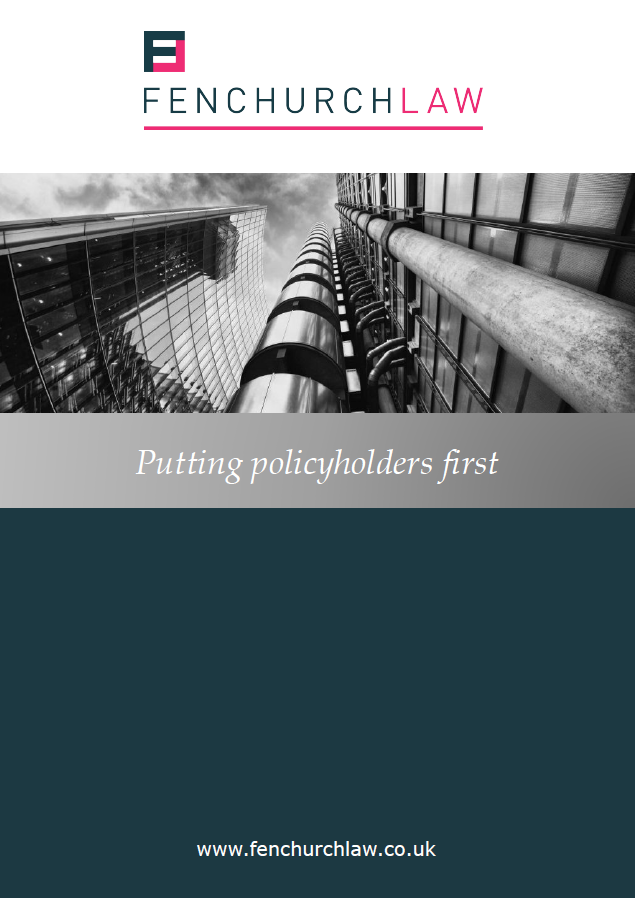
The world’s first LEG3 Court decision, and what it means for the Builders’ Risk market
Introduction
27 years after the London Engineering Group (“LEG”) introduced its suite of defects exclusions, a Court in the District of Columbia in the USA has delivered the world’s first Court decision on the most generous of the three LEG clauses, LEG3, in the case of South Capitol Bridgebuilders v Lexington Insurance Company, No. 21-cv-1436, 2023 US Dist. LEXIS 176573 (D.D.C. Sep 29, 2023). That fact that the Builders’ Risk market (or what we in the UK would call the Construction All Risks, or “CAR” market) has been waiting for a LEG3 decision for this long means that SCB v Lexington was always going to receive a lot of attention. However, the unrestrained and intemperate language used by the Judge means that there is a risk that the decision will create more heat than light, and has the potential to lead to a reaction by Builders’ Risk insurers, particularly in the US, which could negatively affect the interests of policyholders. That would be a great shame, as the availability of appropriate Builders’ Risk insurance is essential for the global construction community. This article therefore attempts to take a step back from the eye-catching language used by the Judge in SCB, and to discuss what a constructive response to the case might look like.
The facts
I’ll start with a very brief description of the facts. The policyholder, SCB, was hired to build the new Frederick Douglas Memorial Bridge, which is a stunningly designed bridge which crosses the Anacostia River in Washington DC, and which is the biggest public works project in the history of the District of Columbia. The design involves three consecutive steel arches on either side of the bridge, which are supported by concrete abutments on either side of the river, and by two v-shaped concrete piers which provide support towards the centre of the river.
The concrete was placed in each of the abutments and piers in separate pours, with workers standing within the formwork and vibrating the concrete in order to achieve even placement. Due to the vibration being carried out inadequately the concrete never achieved even placement, and when the concrete had dried and the formwork was removed, the policyholder saw that the concrete contained voids, referred to as “honeycombing”. The honeycombing diminished the concrete’s weight bearing capabilities, and meant that the concrete had to be repaired so that an even distribution of concrete, without honeycombing, could be achieved.
The policyholder had the benefit of a Builder’s Risk insurance policy issued by Lexington, which contained the 2006 version of the LEG3 defects exclusion. The policyholder submitted a claim to the insurer on the basis that the honeycombing of the concrete constituted “damage” which triggered the main insuring clause of the policy, which was not excluded by LEG3. The insurer refused indemnity on the basis that, in order for there to be damage which triggered the policy it was not sufficient for the honeycombed concrete components to have been in a defective condition from time they were made. Rather, for there to be damage, a subsequent alteration in the physical condition of the concrete components was required.
The insurer also argued that, even if the concrete was damaged, the LEG3 clause excluded coverage because the whole of the remedial works constituted an improvement, on the basis that “if something broken gets fixed, hasn’t that thing been improved?”.
Based on the above the Court (which, although it was in the District of Columbia was applying Illinois Law) was required to address the following questions:
- Did the honeycombing of the concrete components constitute damage, so as to trigger the main insuring clause of the policy?
- Is the meaning of the LEG3 clause unambiguous?
- If the meaning of the LEG3 clause is ambiguous, how should that ambiguity be resolved?
I’ll explain what the Court held in relation to each issue, and add some comments of my own, in turn.
Did the honeycombing comprise damage?
Lawyers from common law jurisdictions who work regularly with policies which are triggered by property damage, whether in relation to works under construction, completed works, or products, will be familiar with the extensive body of authority from around the world in relation to the question of what constitutes “damage”. In this respect it is common for the Courts of a variety of different jurisdictions to look to decisions in other jurisdictions to help inform that issue, not because decisions from other jurisdictions are binding, but because they can be helpful in understanding an issue which has received a significant amount of prior judicial attention.
The insurer in SCB appears to have drawn a significant amount of authority to the Court’s attention, but the Judge could not have been less interested in it (“Lexington does not bother to explain how these non-binding cases are analogous, or why the Court should consider them persuasive”). Ouch. Had the Judge taken the view that the damage authorities were persuasive then the outcome of the case would almost certainly have been different, because most common law jurisdictions clearly do regard damage as a “happening” (which requires a change in physical condition), as opposed to a “condition” (which does not require a change in physical condition). In SCB’s case, there was no change in physical condition, as the concrete components contained honeycombed voids from the outset. According to the authorities in most common law jurisdictions, and certainly in England & Wales, the honeycombing would therefore have meant that the concrete components were in a defective condition from their creation, and the lack of a subsequent change in physical condition would therefore have meant that they didn’t suffer damage.
However, the Judge in SCB not only took the opposite view, but did so in the clearest terms. Asking himself the question of “whether ‘damage’ is properly understood to include the costs of fixing the concrete flaws that weakened the bridge”, he found that “the answer is unambiguously, yes”. So, how did he reach a view that for lawyers in other jurisdictions would find so surprising?
The reason starts with the fact that “damage” was not a term that was defined in the policy issued by Lexington. That meant that under Illinois Law the way to understand the meaning of the term was not to consider any authorities, but to look instead to “plain, ordinary, and popular meaning of the term”. To determine that meaning the Judge looked at Black’s Law Dictionary (10th ed., 2014), which defined damage as “loss or injury to person or property” or “any bad effect on something”.
Applying the above definition, the Judge found that the policyholder’s inadequate vibration of the concrete “caused a decrease in the weight bearing capacity of the bridge and supporting structures”, and that “a decreased weight bearing capacity is surely an injury, or at the very least a bad effect, on the bridge and its support structures”. That analysis may be true as far as it goes, but it can only be justified on the basis that the “decreased capacity” exists in comparison with the intended capacity, and not as compared with a capacity which existed before a change in physical condition which resulted in the decrease. The problem with that approach, is that a decreased capacity as compared with an intended capacity is describing contract works which are in a defective condition, and Builders’ Risk policies are not intended to cover the cost of repairing defective but undamaged property. That is a commercial risk for builders which the Builders’ Risk insurance market isn’t, and never has been, prepared to insure.
That problem is not a small one, in practice. If it is right that, under Illinois Law, property which is in a defective condition triggers an insuring clause which requires “damage”, it gives rise to a risk that Builder’ Risk insurers in that jurisdiction (and other similar jurisdictions) will use another way to ensure that they aren’t required to pay for the cost of repairing defective but undamaged property. One way to do so would be to withdraw the availability of the more generous LEG clauses (LEG2 & LEG3), and restrict cover to LEG1, which excludes the cost of repairing any damage which is caused by mistakes of any kind. That would be a significant backward step for the Builders’ Risk market, and would be a terrible development for affected policyholders.
Fortunately, there is a simple fix, which is that if a Builders’ Risk policy is issued in a jurisdiction which, like Illinois, looks to the dictionary definition of damage if it isn’t defined by the policy, rather than to any of the damage authorities, then insurers and brokers need to ensure that their policies do include a definition of damage. I would suggest the following (other formulations are available):
“Damage means an accidental change in physical condition (whether permanent and irreversible, or transient and reversible) of insured property, which impairs either the value or the usefulness of that property”.
Is the meaning of LEG3 unambiguous?
Both policyholder and insurer argued that LEG3 was unambiguous. The policyholder argued that LEG3 unambiguously provided cover for the cost of repairing the honeycombed concrete components, and the insurer argued that LEG3 unambiguously excluded cover. The Judge disagreed with both parties, finding that “LEG3… is ambiguous, egregiously so”. Ouch (again). Is it, though?
Again, it is important to remember that the Judge was applying Illinois law to the question of ambiguity, and Illinois Law in this respect isn’t necessarily going to be the same as other jurisdictions. It certainly isn’t the same as the approach that would be taken by the English Courts, which only find that a clause is ambiguous if there are competing interpretations which the Court is unable to choose between. According to the Judge in SCB, however, under Illinois Law a clause is ambiguous if it is “subject to more than one reasonable interpretation”. That is a very low bar, and the Judge may well have been right that the low bar was met in this case. Of course, that does not mean that a Judge applying a different test, with a higher bar for ambiguity, wouldn’t have been able to make a finding about what LEG3 does actually mean. However, the SCB Judge’s (too) scathing comments about the drafting of LEG3 may have the positive effect of prompting a re-draft of the clause which addresses an issue with the clause which clearly exists in theory, but which thankfully I haven’t yet seen in practice.
The specific problem with the way in which LEG3 is drafted is that it mixes up causation on the one hand, and the condition of the relevant property, on the other. Defect exclusions should be concerned with either causation (which is the intended focus of LEG1 and DE1) or with the condition of the relevant property (which is the intended focus of DE2, DE3, and DE4), but not with both. The problem with LEG3 is that the exclusionary words which begin the clause (“all costs rendered necessary by [mistakes]…”) are concerned with causation. That part of the clause is a full exclusion for the cost of fixing mistakes of all types, whether workmanship, design, materials, specification, or plan, just as with LEG1 or DE1. There is then a write back (“should damage … occur to any portion if insured property containing any of the said defects…”) which brings back cover for the cost of fixing damage to insured property where the mistakes have been built into the works (with the end of the clause limiting the write back so that it only excludes improvement costs). The problem with that is that the write back is not expressed to extend to cover the cost of repairing damage caused by mistakes which are sustained by property which is not in a defective condition prior to the occurrence of the damage. A literal reading therefore suggests that LEG3 provides greater cover for the cost of fixing damage to defective insured property than it does for the cost of fixing damage to un-defective insured property. That was clearly not the intention of the LEG committee when drafting LEG3, and it is not how CAR insurers in the UK approach LEG3, but unfortunately it is what LEG3 actually says.
Given that damage is required to trigger the insuring clause of a Builders’ Risk policy then, as long as damage is properly defined, the cost of fixing defective but undamaged property should never trigger the insuring clause, and so does not need to be excluded. That being the case, the intention of the current LEG3 clause (which is to only exclude improvement costs) could be achieved by the following much simpler formulation:
“The insurer shall not be liable for that cost incurred to improve the original material workmanship design plan or specification”.
Wouldn’t the above formulation be much easier for policyholders to understand? Clearly yes. In my view nothing useful from the current clause would be lost, but I would be very interested to hearing from anyone who takes a different view (david.pryce@fenchurchlaw.co.uk).
Resolving the “ambiguity”
Having found that LEG3 was ambiguous, the consequence under Illinois Law was that the clause must be “construed against its drafter”, which in this case meant that the clause needed to be construed against the insurer, Lexington. That was the case notwithstanding that, of course, LEG3 is a standard clause that wasn’t in fact drafted by either of the parties in SCB, but by the LEG committee in London, and has been commonly used by parties to Builders’ Risk insurance policies across the world for more than a quarter of a century.
Outcome & final comment
Given the above, the Judge found wholly in favour of the policyholder. As a policyholder representative I can only applaud the effectiveness of the arguments made by SCB’s attorneys, but I am concerned about the potential for the outcome to have a negative effect on Builders’ Risk policyholders in the future. I hope the suggestions above can help those who, like me, want to ensure that doesn’t happen.
I’d like to finish with a final comment on a point that didn’t ultimately affect the outcome in SCB, but which touches on a point of general importance, which is the issue of how to assess improvement costs, which the Judge addressed in an interesting, and quite neat, way. What constitutes improvement costs is an issue that comes up frequently in practice, and there remains no clear guidance from the Courts on how improvement costs should be determined.
In SCB the insurer argued that fixing property which had been defective before the damage occurred must necessarily constitute an improvement. The extension of that argument is that the cost of fixing design mistakes which have resulted in damage must all constitute improvement costs. That interpretation is not only contrary to the intention of LEG3, but is also wrong as a matter of principle for the reasons explained in our previous article (“You have to be pulling my LEG(3)“). The way the Judge dealt with the point in SCB was as follows:
“The context of [LEG3] suggests that to improve means to make a thing better than it would have been if it were not for the defective work”.
That formulation, in my view, works well as far as it goes, and is a useful way to look at what constitutes improvement costs where damage has been caused by workmanship failures. However, it is less clear that it works for damage which is caused by design mistakes, which need to repaired by utilising a superior and more expensive design the second time around. It remains my view that the best way to assess improvement costs is by adopting the three-stage test outlined in our earlier article.
David Pryce is the Managing Partner at Fenchurch Law
Other news
Timing is everything – Makin v QBE and the cost of not complying with a condition precedent
3 July 2025
This recent decision from the High Court provides a powerful reminder of the consequences of not complying with a…
You may also be interested in:
Archives
Categories
- Operations
- Business Development
- Construction & Property Risks
- News
- International Risks
- Legislation
- Financial & Professional Risks
- Case Law
- Professional Risks
- Press Release
- Uncategorized
- The Good, the Bad and the Ugly
- Fenchurch Law Webinars
- Stonegate
- Newsletter
- Events
- Webinars
- Comparing German and English Insurance Law – A Series
- Construction Risks



